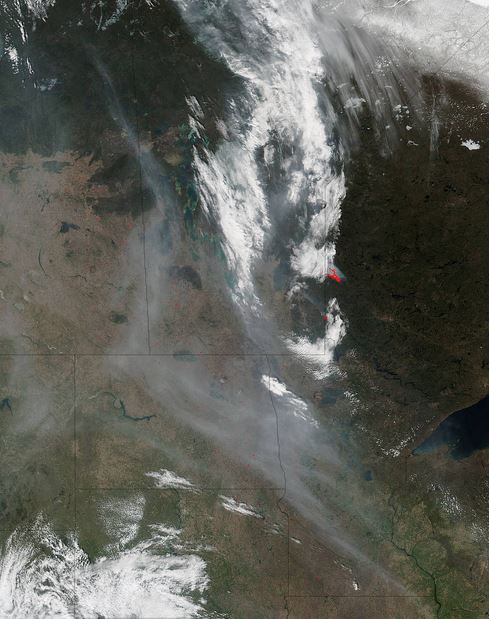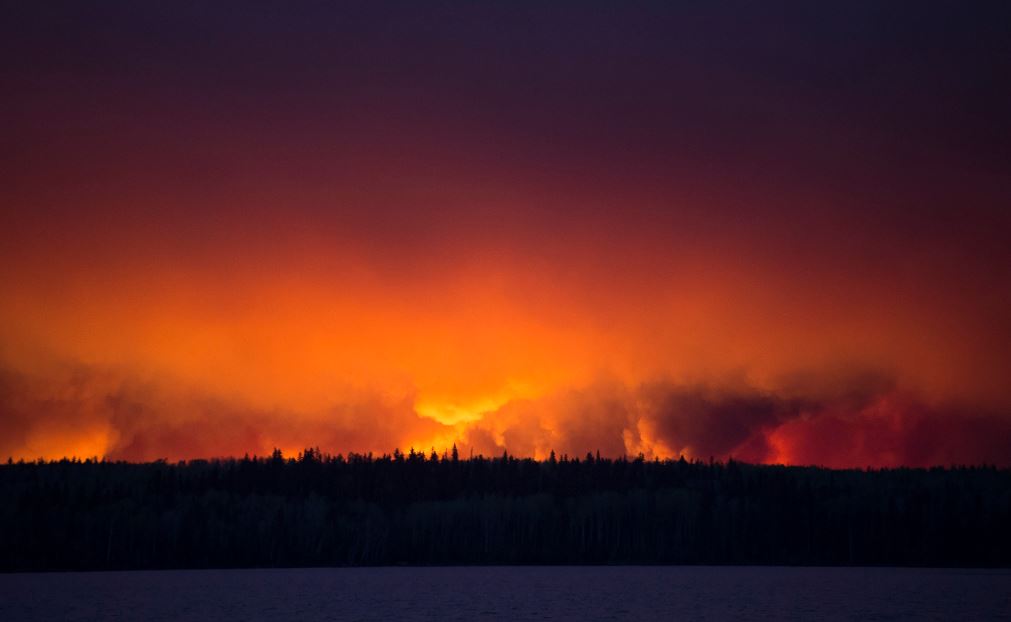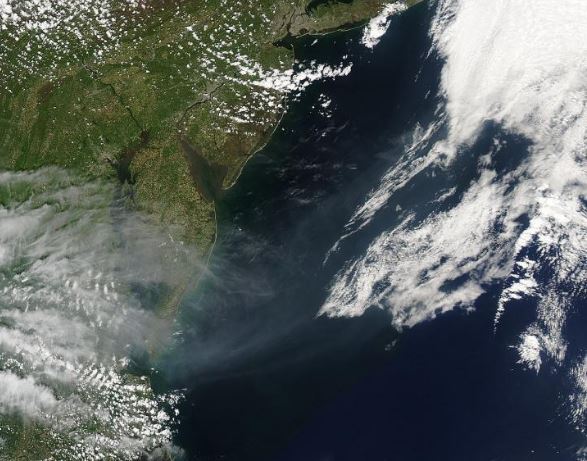The Fort McMurray area will continue to be razed for some time by a massive wildfire, according to NASA, which reports that fire conditions remain extreme in the province due to very high temperatures, low humidity and wind.
NASA says that its satellites continue imaging the area and that it is in close contact with the Government of Alberta.
 The MODIS instrument on the Terra satellite captured this photograph on 8th May of Ft. McMurray Fire in Alberta, Canada. (Image: nasa.gov)
The MODIS instrument on the Terra satellite captured this photograph on 8th May of Ft. McMurray Fire in Alberta, Canada. (Image: nasa.gov)
The following communities, according to an emergency update, are under an evacuation order:
– Anzac
– Fort McMurray
– Gregoire Lake Estates
– Fort McMurray First Nation
People who live in Fort McMurray and have had to evacuate should not expect to return to their homes for quite some time, authorities informed. The Alberta Government said: “Public safety is our number-one priority, and residents won’t be able to return home until it is safe to do so.”
According to an update by the Government of Alberta:
“Currently there are more than 500 firefighters battling the blaze in and around Fort McMurray, along with 15 helicopters, 14 air tankers and 88 other pieces of equipment.”
 This image of the wildfires currently burning in Canada was captured by the Suomi NPP satellite on 8th May. (Image: nasa.gov)
This image of the wildfires currently burning in Canada was captured by the Suomi NPP satellite on 8th May. (Image: nasa.gov)
“Yesterday’s plan (on May 07) to evacuate 25,000 residents who fled north of Fort McMurray was a success. As of 10:00am, no evacuees have been reported remaining in camps to the north. 300 people from Fort McKay were evacuated to the Edmonton area by air and ground. This was a precautionary evacuation due to heavy smoke in the area.”
Evacuation from oil & gas facilities
On 7th May, 1,500 workers at the Syncrude facility were evacuated, and the facility was shut down. Syncrude is one of the largest crude oil producers from oil sands in Canada.
Groups of workers were also evacuated from the Shell, Husky, Suncor and CNRL facilities. Several of these facilities are still operating. Two-hundred-and-fifty ATCO workers are in Fort McMurray trying to restore the power grid and assess the gas infrastructure.
The wildfire, which is expected to continue expanding, currently covers 161,000 hectares (more than 397,800 acres). The whole of New York City, which is 121,000 hectares, would easily fit into the area covered by this fire.
 Firefighters, residents and the authorities in Canada are praying for rain, as one of the largest and most ferocious wildfires in the country’s history continues to spread. (Image: flickr.com/photos/premierofalberta)
Firefighters, residents and the authorities in Canada are praying for rain, as one of the largest and most ferocious wildfires in the country’s history continues to spread. (Image: flickr.com/photos/premierofalberta)
34 wildfires burning
The Government of Alberta added:
“Fire conditions remain extreme, with four new starts across Alberta yesterday. A total of 34 wildfires are burning, with five out of control, 23 under control and six turned over to the responsible parties.”
“More than 1,500 firefighters, approximately 150 helicopters, 222 pieces of heavy equipment and more than 28 air tankers are fighting the fires across the province.”
“Temperature forecast for Sunday is 18°C (64 degrees F) with winds gusting up to 50 kilometres per hour (31 mph). There is the potential for showers in the Fort McMurray area.”
 The MODIS instrument on the Aqua satellite captured this photograph on 8th May of smoke from the Ft. McMurray wildfire and other Canadian wildfires billowing across the Atlantic Ocean. (Image: nasa.gov)
The MODIS instrument on the Aqua satellite captured this photograph on 8th May of smoke from the Ft. McMurray wildfire and other Canadian wildfires billowing across the Atlantic Ocean. (Image: nasa.gov)
The smoke rising from the fires is making its way into the Atlantic Ocean – the Aqua satellite captured the image of its movement eastward.
The smoke released by any kind of fire – waste, wood burning, crop, brush, forest or waste – is a mixture of chemicals and particles produced by incomplete burning of carbon-containing materials.
All smoke contains particulate matter (soot), carbon dioxide and carbon monoxide. Humans should avoid exposure to these toxins.
Video – Update on Canadian Wildfire situation
In this video, Premier of Alberta Rachel Notley and technical experts provide an update on the Fort McMurray wildfire and assistance efforts.
